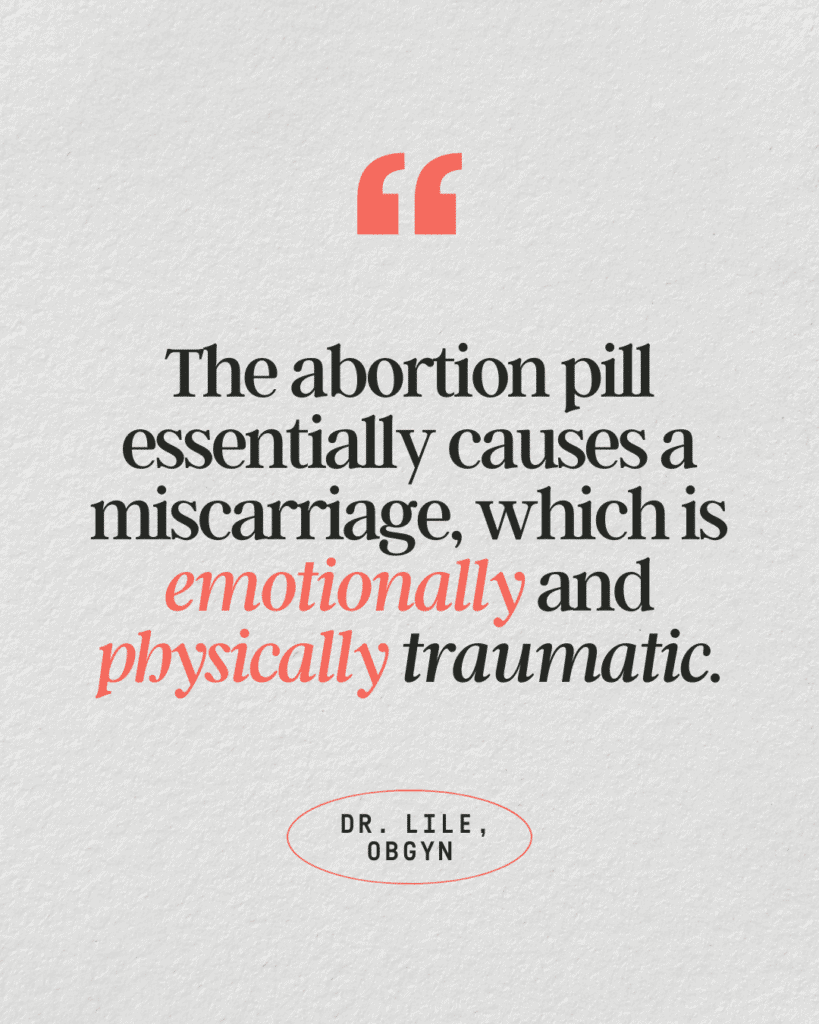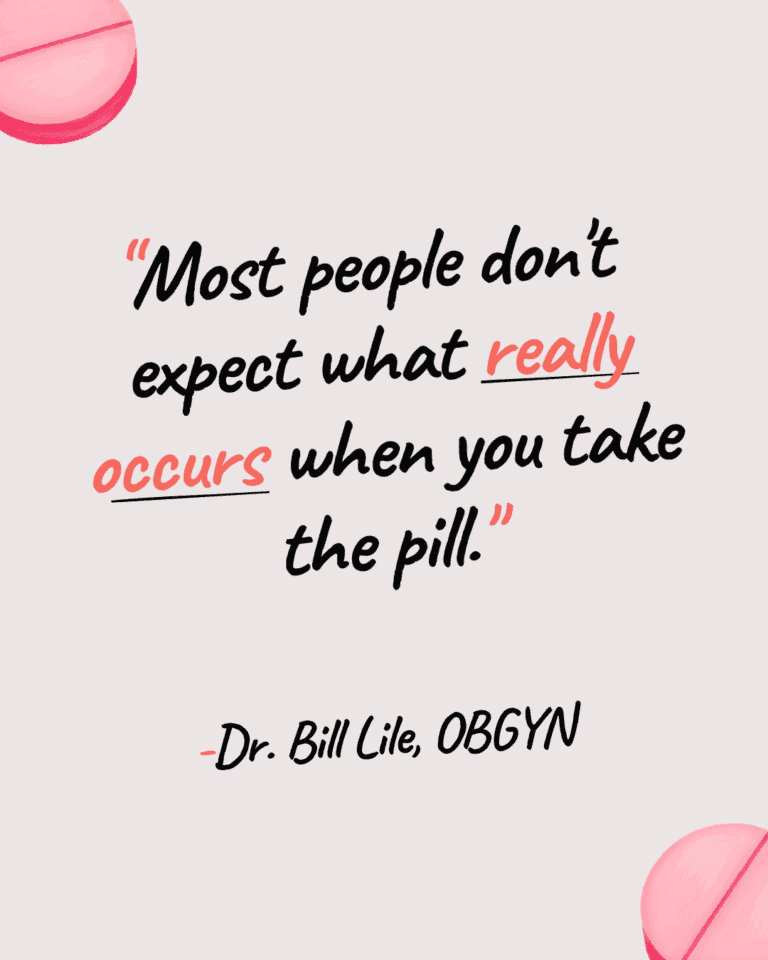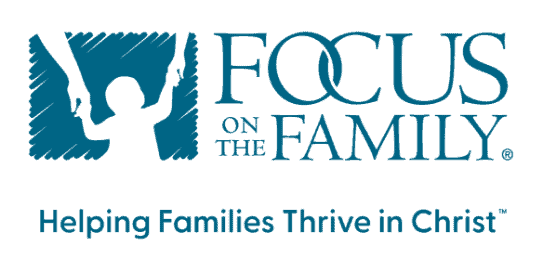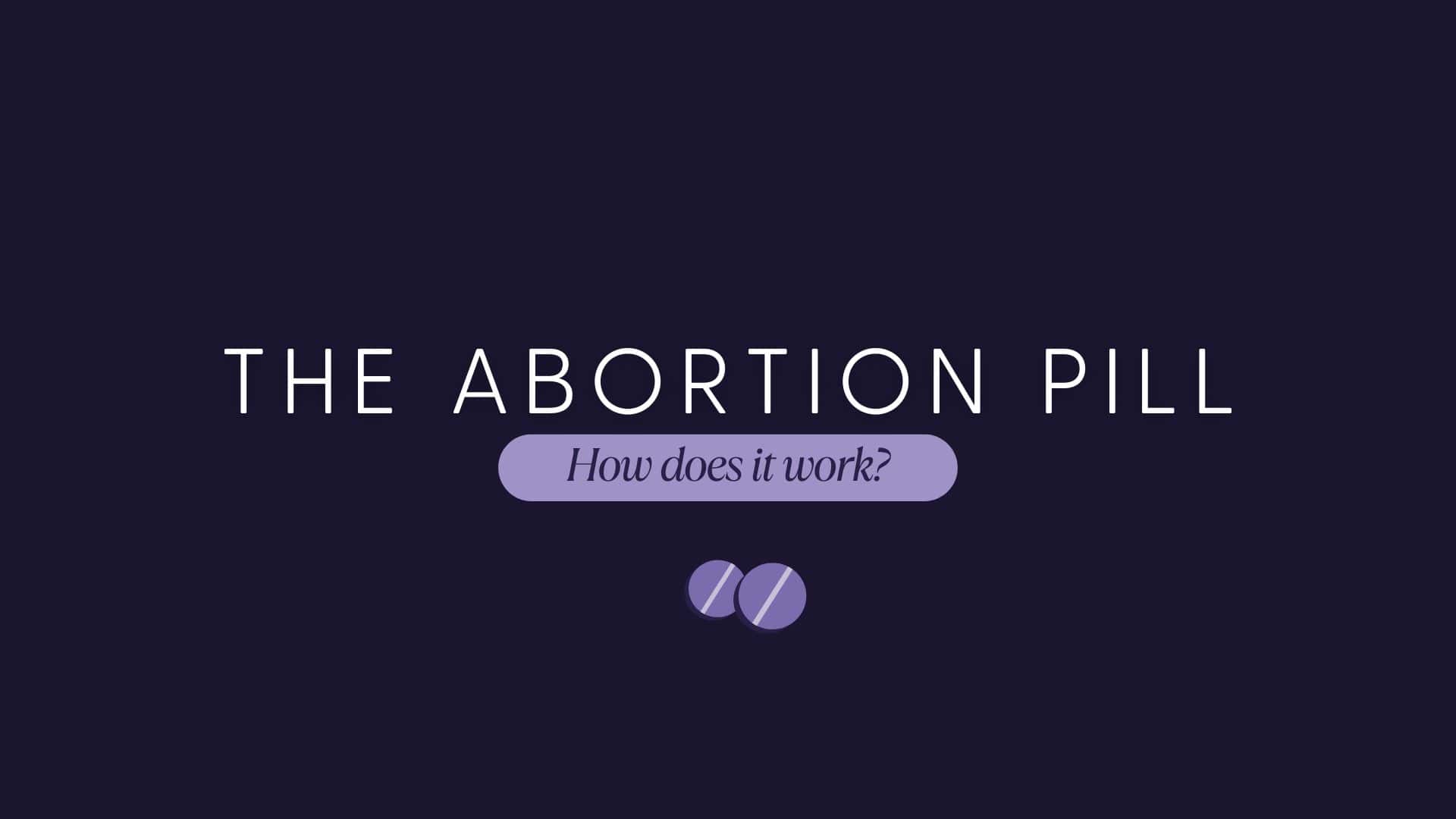The abortion pill (a.k.a medical/chemical abortion) is currently the fastest-growing form of abortion in the United States today. This article outlines what a medical abortion is, how it works, and how a medical abortion can be stopped via abortion pill reversal.
How Does The Abortion Pill Work?
So, how does the abortion pill work? Ultimately, a medical abortion occurs after taking two pills. Each pill contains a different medicine.
Mifepristone
- (Mifeprex) blocks progesterone, a hormone, essential for a healthy pregnancy. Originally called RU-486, it was approved for abortiona in 2000. Since then, the generic name mifepristone or the trade name Mifeprex (also known as Cytotec) has been used. According to the Mayo Clinic, Mifeprex blocks progesterone causes the lining of the uterus to thin and keeps essential nutrients from going to the baby. What does mifepristone do to the baby? Basically, given as the first abortion pill, this drug cuts off the blood supply and nutrients to the developing embryo.
Abortion Pill and Ectopic Pregnancy
- It is so important for women to get an ultrasound and confirm pregnancy and location of pregnancy BEFORE taking the first pill.
- It is essential to note that Mifeprex does not have a similar effect on a tubal pregnancy. That is why it is crucial to get an ultrasound and determine the location of the pregnancy. “Mifepristone exerts its effects on the uterine lining, so when an embryo is implanted in another location, the chemical abortion regimen has no effect. Continued growth may cause the Fallopian tube to rupture or cause bleeding if the embryo is implanted in another vascular organ. Catastrophic hemorrhaging in these situations sometimes leads to maternal deaths.”
- Charlotte Lozier Institute notes, o A woman who experiences ectopic warning symptoms, such as pain or bleeding, while undergoing a chemical abortion may be less likely to report them to a health care provider because she has been warned to expect just such symptoms as a sign that the abortion drugs are working. A woman is 30% more likely to die from an ectopic while undergoing an abortion than if she had an ectopic but had not sought an abortion
Misoprostol
- Taken as the second pill 24-48 hours later, this pill causes the uterus to contract and the cervix to soften so that the body can expel the dead baby and related tissue. In short, misoprostol induces early labor.
Together, these medicines work to stop the growth of pregnancy before inducing labor. Dr. Lile (board-certified in obstetrics and gynecology) discusses medical abortion. Moreover, he discusses why many abortion providers don’t disclose this information to their clients:
More Interviews with Dr. Lile:
What To Expect
The process of a medical abortion can be very uncomfortable. Furthermore, it can be dangerous. The process of a medical abortion has three parts:
- The First Visit
- Firstly, a woman visits her abortion provider and is given the first pill. Afterward, she is sent home with the second pill.
- 24 to 48 Hours Later
- Secondly, she takes the second pill at home.
The classic symptoms of miscarriage occur. Someone who has taken the abortion pill may experience these symptoms:
- Severe abdominal pain or cramping
- Bleeding or severe spotting
- Discharge of tissue or fluid
Notably, these symptoms may occur for 9-16 days. However, around 8% of women may experience bleeding for 30 days or more. If the abortion is not fully successful, further steps are taken to induce pregnancy loss. Without delay, either more medication or a surgical abortion is required.
I Took the Abortion Pill - 7 1/2 Weeks Pregnant
by Rebekah Hagan with Suzanne Gosselin
I sat in my car, tears streaming down my face. I had just walked out of Planned Parenthood after taking the “abortion pill.” Initiating a chemical abortion had been simple—check some boxes regarding my medical history and sign my name a few times, affirming I wanted to have the abortion. In a small exam room, I swallowed the mifepristone pill (also called RU-486) in front of a watching nurse.

Back in my car, I rummaged through the brown paper bag I’d received, containing the pills I would use to complete my abortion 24 hours later. The second medication, misoprostol (also known as Cytotec), would induce active labor, causing my body to expel what they’d referred to as a “pregnancy.”
“The process will be very natural,” the nurse had explained, “much like your regular menstrual cycle. You should only be concerned if you are passing blood clots larger than the size of a lemon.”
Large Blood Clots
Her words replayed in my mind, and fear seized my heart. Blood clots as large as my fist? Suddenly, I had another horrible thought. Exactly one year earlier, I had been in active labor with my oldest son. Tomorrow, the day I planned to complete my abortion, would be his first birthday.
I’m never going to be able to forget this day, I thought. It would be a day commemorating joy and heartbreak—joy over bringing one baby into the world and heartache overtaking another one out of it.
Difficulty With Family
I grew up the youngest of four sisters in a conservative Christian home. There were unspoken expectations for moral behavior and refraining from sex before marriage. An unplanned pregnancy with a boyfriend did not fit within those expectations. Because my parents and I never had those tough conversations, I didn’t view them as authorities on those subjects. At 17, I found I was pregnant. Despite my fear of the unknown, I had hope and chose life for my baby.
When faced with the reality that their baby was having a baby, my parents were shocked and angry. The anger eventually turned to support, though my dad made it clear that a repeat occurrence was not an option. This was a one-time extension of grace, and I could not let it happen again. With their help, I graduated from high school, delivered my son and began college at a local university. Things seemed to be looking up, at least on the outside.
Unsafe Relationship
Behind closed doors, my on-again-off-again relationship had become abusive and unsafe and I knew it had to end. Living under my parents’ roof, I started life as a single mom. However, just a few days after ending that abusive relationship, I discovered I was pregnant again. This time, I had no hope. I went into crisis-survival mode and convinced myself to take swift action before anyone discovered my secret.
The narrative surrounding chemical abortion is that it’s a simple, convenient solution to an unwanted pregnancy. “Take these pills, and your pregnancy—and your problems—will magically go away.” Desperate for a way out, I believed it was a compassionate, responsible choice.
So far, I’d defied the odds, finishing high school and getting into college. My parents were proud of me, and I had just regained their trust. I believed the news of another unplanned pregnancy would cost me my education, my dreams and even my family.
You Versus the Baby
I was desperate to preserve the life I was creating for myself and my almost 1-year-old son, and I questioned the quality of life we would have if I brought another child into this world. I envisioned us being alone, broke and homeless, and my children growing up without a father. Amid this panic, the abortion industry pitted me against my own child, telling me I had to choose between the two.
A Choice, A Regret
I had fewer than two weeks remaining to choose a chemical abortion. I was warned that if I didn’t decide quickly, time would run out, and a surgical abortion—something I knew I could never go through with—would be my only option.
Believing hope was waiting on the other side of this choice, I swallowed the first abortion pill. Only moments later, regret set in. I was angry at myself and felt duped. I sensed this was bigger than an abortion doctor misleading me; this was a battle of good versus evil, light versus darkness. I had been walking down a dark path, looking for anything that appeared to be light and hope. I had followed what I’d mistakenly thought was light and made my choice. And in that moment, it was as if Satan blew out the candle and said, “Gotcha! Now you’ll know shame, grief and regret for the rest of your life.”
I suddenly understood how far I had strayed. But there was no going back. If I didn’t take the second set of pills, the abortion clinic doctor had said, there would be a risk of fetal anomalies.
“Lord,” I prayed, “please help me find a way out of this. Even if there is no way, please forgive me, and help me to forgive myself.”
A Way of Escape
After I prayed, I began searching the internet for what to do if I didn’t want to complete my chemical abortion. I scrolled through pages of search results until I came across an advertisement that offered hope and the possibility of reversing the effects of the abortion pill, a protocol called Abortion Pill Reversal (APR). The website had just launched, and the information was new. I didn’t know what to expect, but I was desperate for a chance to save my baby.
I called the number and spoke to a kind nurse manager at a pregnancy center. I’ll never forget the compassion in her voice as she asked questions about what had led me to this point. She began to explain how the abortion pill works, and I was shocked. I hadn’t been told any of the details.
What is Abortion Pill Reversal?
“The pill you took is designed to deprive your body and your baby of progesterone,” she explained. “If we can get progesterone back into your body, there is a chance your pregnancy can continue, and you can give birth to a healthy baby.”
The center connected me with a doctor two hours away from my home in Northern California who could administer the protocol. Within 24 hours of taking the abortion pill, I started the APR progesterone regimen, which would last for several weeks.
When my parents found out about my second pregnancy, they were as angry as I expected. But my dad’s wrath softened when he learned that I could have been upstairs in his own home aborting his grandchild. Both of my parents were shocked to learn they had been cut out of the equation. That shock turned to compassion and, eventually, support. Though there were no guarantees, the abortion pill reversal protocol was effective, and in October 2013, I gave birth to a healthy baby boy.
Women Like Me
Through my story, the Lord put me on a path to serve in the pregnancy-help field. Over the past decade, I’ve dedicated myself to this mission, working in pregnancy centers and pro-life nonprofit organizations. I’ve met women facing situations like mine and noticed a gap between those women and the supporters who sustain these valuable ministries. I observed that even well-meaning believers didn’t fully understand who was walking through our doors and why.

Our pregnancy center clients weren’t primarily women from low-income areas lacking education or a Christian upbringing. These were women like me from local churches and families. Through sharing my story, I was able to say, “I’m not an exception. This is happening in our community, and we need to approach the abortion issue with compassion and conviction.”
What is a Chemical Abortion?
Chemical abortion, also known as the abortion pill, which is not carefully regulated and can pose health risks to the mother, is marketed as safe, convenient and affordable. With widespread accessibility through telehealth and mail-order pharmacies, chemical abortions now make up 63% of all U.S. abortions. Young, vulnerable people are being deceived, and the lives of preborn children are at risk.
Today, I speak frequently at churches and on behalf of pregnancy help organizations about chemical abortion and Abortion Pill Reversal. Through my story, I seek to illuminate the mindset of women experiencing unplanned pregnancies, the lies the industry is telling them and how pregnancy centers provide a lifeline to these women and their babies. The pain of an unplanned pregnancy brought me to the pregnancy-help field, but passion has kept me here. I will continue to use my story of a second chance at choice, to glorify God and help others choose life.
Risks and Side Effects of the Abortion Pill
According to data collected by Micromedex, women may experience:
- headache (up to 44%)
- nausea (43-61%)
- vomiting (18-26%)
- diarrhea (12-40%)
- fatigue (10%)
- cramping and pain (96%)
As with any major medical procedure, there are also chances of experiencing post-procedure hardships like PTSD and depression.
Warning Signs for the Abortion Pill
With this in mind, more severe symptoms may occur. These symptoms may be signs of life-threatening issues. While tough symptoms are a part of the medical abortion process, a client should contact a professional immediately if they experience:
- heavy bleeding that soaks through two thick, full-sized sanitary pad per hour for two hours
- persistent stomach pain or discomfort
- weakness
- nausea
- vomiting
- diarrhea, with or without fever
- fever of 100.4° or higher for more than four hours.
Other Concerns
Additionally, there are several other risks and factors women should know about the abortion pill before taking it.
- The medical abortion process may mask symptoms of ectopic pregnancy.
- Taking misoprostol vaginally (as some providers suggest) is hazardous. Deadly infections may occur as a result.
- If a medical abortion is used more than 70 days after your last menstrual period (LMP), this increases the likelihood of experiencing adverse health effects. In the same way, this may increase the probability of causing an incomplete abortion.
- Again, emergency medical situations may arise from a medical abortion. Sadly, not all abortion providers have immediate access to a surgical facility.
How the Abortion Pill Works
As review, the abortion pill is actually a combination of two pills – mifepristone and misoprostol.
When a woman is pregnant, her body releases a hormone called progesterone. It’s her body’s way of seeing the pregnancy and coming in to support it and keep it healthy. The first of the two-pill regimen – mifepristone – blocks the effects of the progesterone. This essentially cuts off nutrients to the fetus and stops it from growing.
With the pregnancy still in the uterus, the second pill (taken the next day) causes large contractions. This sets in motion what some doctors call “early delivery” and is similar to those of a miscarriage. Because the process is so intense, having an at-home abortion through the pill can be overwhelming.
Abortion Pill Online Safety
There are a few key differences in getting the abortion pill online versus in a doctor’s office. For one, there are risks that come along with not having an in-person visit before getting the pill, such as not knowing the gestational age of the fetus. Another con is not having a doctor in person to check in through an emotionally and physically heavy process.
Risks of At-Home Abortion
By skipping an in-person exam, risks increase, such as:
- Dating a pregnancy incorrectly, which risks severe complications if taken after the 10-week limit from the FDA.
- Having an ectopic pregnancy, which risks missing the window for potentially life-saving treatment.
- Isolation during a traumatic procedure, which risks depression and suicidal thoughts (these are already extremely high after an abortion) and encourages a woman to go through it alone.
- Not seeing an ultrasound, which risks pressure into an abortion decision without knowing what’s going on in a woman’s body

Possible Complications of At-Home Abortion
The safety of the abortion pill online is minimal at best. While removing mandatory doctor’s appointments can be convenient, it also removes essential medical services from the abortion process. For example, someone can test positive on a pregnancy test but not know they have an ectopic pregnancy – which is dangerous and potentially life-threatening. Forgoing an ultrasound and having an at-home abortion leaves a big risk of missing an ectopic pregnancy and not getting life-saving treatment in time.
Additionally, abortion complications are very common with the pill – about one in three women experience mild to severe physical side effects. In fact, the abortion pill actually has four times the amount of complications than surgical abortion. The abortion pill process should have more medical supervision, not less.
And this doesn’t even include psychological side effects: depression, nightmares and regret follow roughly one-third of abortions. There is also a double risk of suicide and five times the risk of substance abuse compared to someone who miscarries. Experiencing such a physically and emotionally heavy procedure alone would make it even harder than it already is and has the potential to harm your physical, emotional and mental health.
Preparing to Take the Abortion Pill Online
If you’re considering the abortion pill online, there are a few simple steps to start with. Though it may feel like a rush, you have time to ensure your health and safety.

First, go to a clinic and confirm the pregnancy. Pregnancy medical clinics offer pregnancy testing free of charge, and can usually fit you in the same day.
The next step is getting an ultrasound. This is by far the most important step before ordering the abortion pill online. Not only will it ensure the pregnancy isn’t ectopic or abnormal, but it is also a window into what is going on in your body. Women often feel hesitant to look and listen when seeking an abortion, but having all of the information will help you make the best possible decision.
After that, seek counseling. It’s okay to slow down and talk through the options because though it seems simple, ordering the abortion pill online, it comes with a lifelong impact.
We suggest going to your nearest pregnancy medical clinic as a first step. They can provide all of the above services and can typically fit you in the same day. They are nonprofits dedicated to helping women with unexpected pregnancy, and therefore don’t charge for services. Find the nearest pregnancy clinic here. If you aren’t ready to go to a clinic but still want to talk to someone, you can call us at 1-800-A-FAMILY to chat about options and how you’re feeling.
Abortion Pill Reversal
If you have only taken the first abortion pill, reversal is possible! The process begins by contacting a medical professional who has been trained in the reversal process. Equally important is how quickly you seek help. With this in mind, the earlier you contact a medical professional, the better.
A medical professional in your area can be found via the abortion pill reversal hotline: 1-(877)-558-0333.
Many lives have been saved through abortion pill reversal. It’s safe, effective, and ministered under the care of a medical professional.
















